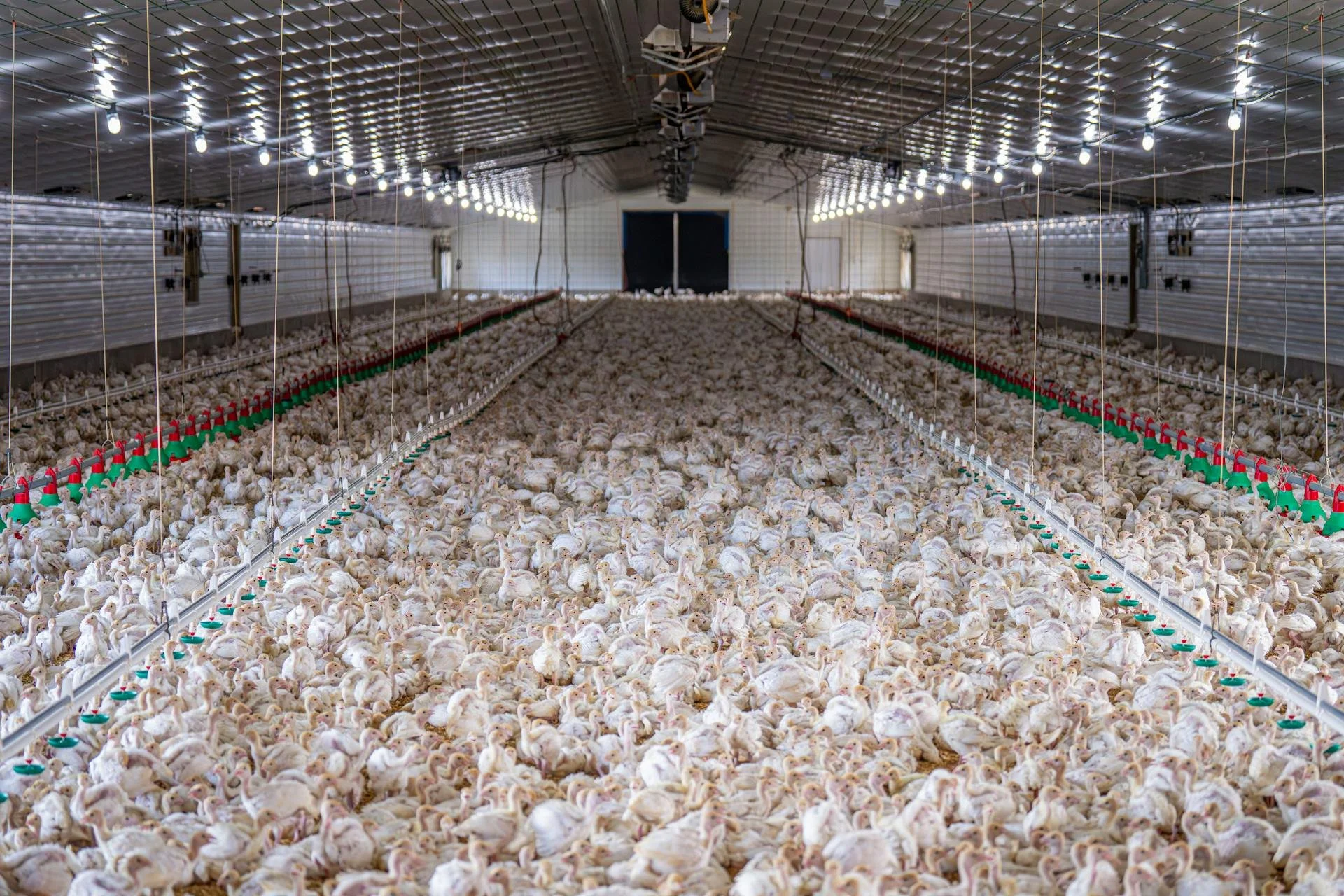
Park Farm
OBJECT NOW!
Park Farm
Deadline: 23 October
Please Submit Your objection to this Intensive Poultry Unit environmental permit application by Oct 23 2025.
How to Object to the Environmental Permit Application
Copy the objection comments below.
Click the ‘Object Now’ button below.
Scroll down on the Environment Agency page and click ‘Share your views.’
At Question 4, copy-paste the objection below.
Objection Comments
1. I object to application EPR/SP3435UV/V005 for an environmental permit for H. Waring and Sons to increase broiler rearing from 150,000 to 240,000 in two new poultry houses at Park Farm Poultry Unit
Everingham
YO42 4LD
2. This application is for an increase of 90,000 broiler places from the current 150,000 to 240,000. Since this is in excess of 85,000, a full Environmental Impact Assessment under Schedule 1, para. 17 of the EIA Regulations 2017 is therefore required. The relevant planning authority cannot grant permission without reviewing the EIA, under section 3 of the EIA Regulations 2017.
3. This application is for a 60% increase in broiler places, with the corresponding increase in both direct and indirect GHG emissions; this constitutes a significant intensification which is a material change of use under section 55 of the Town and Country Planning Act 1990.
4.Applications for environmental permits and planning permission for intensive animal installations need to be ‘twin tracked’. I urge the EA not to grant a permit before this application has planning permission.
5. Park Farm already has 4 poultry sheds, housing 150,000 broilers. The previous Environmental Permit issued in 2007 is for 105,000 birds (EP SP3435UV). The EA should investigate this discrepancy.
6. In the 2015 planning application for additional poultry housing, an EIA was deemed unnecessary, and is therefore long overdue considering the scale of expansion since the 2007 permit was issued. A new permit should therefore not be issued without planning permission.
7. The application represents a significant intensification with serious consequences to the amenity of local people, public health, the environment, and the animals. Increases in odours, dust, ammonia, pollution, traffic, manure, waste, dirty water, greenhouse gas emissions, and the downstream direct and indirect impacts on people, ancient woodlands, SAC/SSSIs protected sites, the climate, rivers must all be assessed as part of the planning consultation process.
8. Recent cases have placed stringent obligations on factory farming developments such as this one. Following Finch v Surrey County Council [2024] UKSC 20, a project specific greenhouse gas assessment calculation is required for EIA; this has not been provided. The assessment should include the emissions from animal feed, slaughter, packaging, transport, and sale. Following R (Squire) v Shropshire Council [2019] EWCA Civ 888 that an environmental statement would be legally deficient if it failed to assess the wider impacts of the storage and spreading of effluent from an intensive poultry rearing facility. The case of NFU v Herefordshire Council [2025] EWHC confirmed that chicken manure is waste, and the LPA does not need to rely on the farming rules for water if they are not working. The case of R (Caffyn) v Shropshire Council [2025] EWHC 1497 (Admin), implies that the planning authority should assess the cumulative impacts of having multiple intensive agricultural developments in one river catchment before granting permission for another.
9. Furthermore, following R (Animal Equality UK) v North East Lincolnshire Borough Council [2025] EWHC 1331 (Admin), animal welfare is a material planning consideration and the public have the right to ask the planning authority to give moral weight to the horrific cruelty experienced by broiler chickens on factory farms due to both their fast-growing genetics and cramped, crowded housing.
10. Given the extensive environmental, health, and animal welfare impacts, it is crucial that no permit is granted before planning consultation is carried out and planning permission granted.